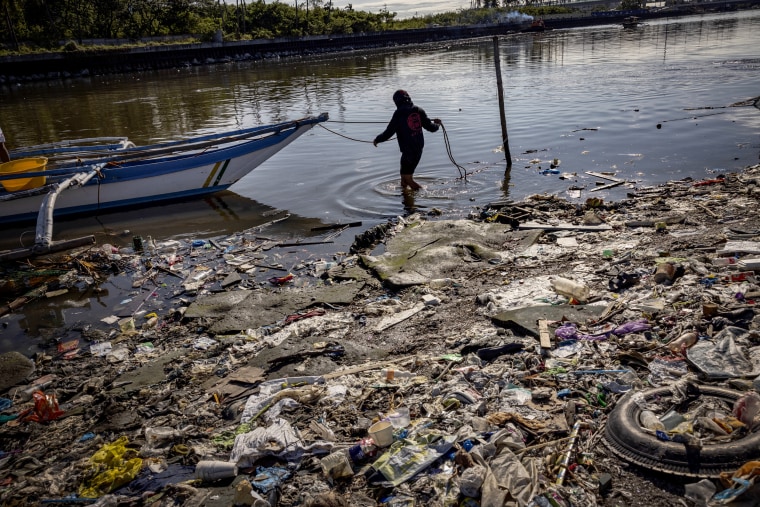Disease-causing bacteria, including the type behind flesh-eating infections, can colonize rafts of seaweed and plastic pollution in the ocean, raising concerns about the risks to humans if they wash up on beaches. But experts say there’s no need to cancel your beach vacation — yet.
A recent study, published last month in the journal Water Research, analyzed the genomes of Vibrio bacteria — of which there are more than 100 species, including about a dozen that can cause human illness — found on plastic marine debris and giant blooms of seaweed called sargassum in the North Atlantic Ocean. The scientists found that Vibrio bacteria found in the open ocean share similar genetic characteristics to Vibrio species known to be “pathogenic,” meaning they can cause disease in humans.
The findings stoked fears of flesh-eating bacteria invading beaches across Florida, the Caribbean and elsewhere in the Gulf of Mexico, where thick mats of sargassum have washed ashore.
Linda Amaral-Zettler, a marine microbiologist at Royal Netherlands Institute for Sea Research and one of the authors of the recent study, said that while they may share some genetic ingredients, not all Vibrio bacteria are pathogens.
“I don’t think everyone should be running away from sargassum as if it’s going to kill them,” she said. “That’s simply not the case. But I think we need to think responsibly about the potential risks.”
People can become infected by Vibrio species by eating raw or undercooked shellfish, or through open wounds. The most dangerous species, Vibrio vulnificus, causes flesh-eating disease, but these infections are considered rare.
A separate study, published in March in the journal Scientific Reports, found that infections caused by Vibrio vulnificus along the eastern coast of the U.S. could significantly increase in the decades ahead, as climate change and warmer sea surface temperatures enable the flesh-eating bacterium to thrive in waters farther north than ever before. Scientists in recent months have raised alarms about a prolonged ocean heat wave, as sea surface temperatures have hit record-breaking highs and could get warmer.
Both research papers highlight the tangled relationships between humans, microbes and marine ecosystems — and the potential public health risks that may increase with shifts in the marine environment.
Giant mounds of sargassum have already caused headaches in parts of Mexico and South Florida this year. The thick mats of algae can destroy coral habitats and diminish water and air quality as they wash up and rot on beaches.
“All of these things are very important, and may shape the way we sort of determine whether our beaches are safe in the future,” Amaral-Zettler said.
Rachel Diner, a marine biologist who was not involved with either of the recent studies, said that while the number of deadly Vibrio infections is still relatively low, cases will likely increase as a result of climate change. As a postdoctoral researcher at the University of California, San Diego, Diner studied how coastal microbes are affected by changes to their environment.
“Vibrios like warm water conditions, so infections by Vibrios have been increasing over the past few decades and also the Vibrio concentrations themselves,” she said. “It’s pretty reasonable to expect that you’re going to see more infections in the future and more of these pathogenic species.”
Diner, who is set to become an assistant professor in the Department of Biological Sciences at the University of Memphis later this summer, said it's not altogether surprising to find Vibrio bacteria hitching a ride on seaweed blooms and plastic pollution in the ocean.
“They do attach to things and live on different surfaces,” she said. “It’s not totally understood how common that is or how dangerous that is, but that’s kind of an active research area right now.”
For Amaral-Zettler, the findings are a reminder of how much humans have altered the marine environment, even in remote places far from land.
“We were in the middle of nowhere in the Atlantic Ocean, seeing huge rafts of sargassum with visible trash in the middle of it,” she said. “That’s hard to look at and realize that in the middle of what we think is a pristine ocean, we have an impact and it’s visible.”

